|
|
Post by Seth Drakin of Monster Crap on Oct 23, 2007 12:59:21 GMT -5
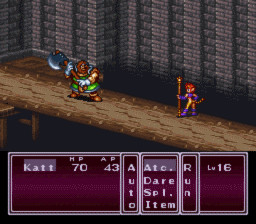 68. Breath Of Fire II Breath of Fire II is the second role-playing game in the Breath of Fire series. It was originally released for the Super Famicom in Japan in 1994 by Capcom. It was released in North America in 1995 by Capcom, before Laguna released it in Europe in 1996. It was later re-released for the Game Boy Advance in Japan under the name Breath of Fire II: Shimei no Ko, which translates to Breath of Fire II: The Fated Child. It was re-released in North America and Europe in 2002 under the original title. The game has been rated by the ESRB for release on Wii's Virtual Console; Nintendo of Europe's website mistakenly announced it for release on July 27th 2007, but was released two weeks later on August 10th 2007. The game was released on the Virtual Console in North America on August 27th, 2007. Ryu, the protagonist, and his best friend Bow have recently been accepted into the ranger’s guild. They go on a few missions for the guild until Bow is accused of thievery and is forced into hiding. Ryu goes in search of the real thief to clear Bow’s name. His search takes him through several towns, each one having problems with demons. After helping the towns, one or two of the townspeople decide to join Ryu in his search. When they finally catch up to the thief, Ryu has a large number of friends. With Bow’s freedom restored, Ryu is free to consider another problem. The demons that Ryu fought are part of a plot by a cult called St. Eva's Church to take over the world and Ryu must find a way to foil the cult. Ryu decides that he and his friends need to attack the headquarters of the church. They travel to the island that the headquarters are on, and confront the high priest. The priest releases many demons on the group as he makes his escape. The party is able to defeat the demons, with few casualties, and go after the priest. When they find him, he is trying to open an ancient seal that is keeping a horde of demons from flooding the world and destroying it. A few make it into the world but they are stopped and the priest is killed. The seal is safe for now, but the demons could break free the next day. Ryu decides to enter the world beyond the seal to prevent the rest of the demons from entering our world. Battling through the hordes the party finally reaches the master of the demons; Evan. After an epic battle, Ryu and his friends are able to defeat Evan, ensuring the security of the world. |
|
|
|
Post by Seth Drakin of Monster Crap on Oct 23, 2007 13:01:14 GMT -5
 67. Legend Of The Mystical Ninja The Legend of the Mystical Ninja (known as Ganbare Goemon: Yukihime Kyuushutsu Emaki in Japan), is a light-hearted action-adventure game for 1-2 players by Konami, and was released for the Super NES in 1992. It was also ported to the Game Boy Advance along with Ganbare Goemon 2: Kiteretsu Shogun Magginesu only in Japan. It is the first game in the Japanese video game series Ganbare Goemon to have a western release. It has also been released for the Wii Virtual Console in Japan, Europe, Australia, New Zealand, and the United States. In this game, the players control Goemon and Ebisumaru (called Kid Ying and Dr. Yang respectively in all non-Japanese releases). The story for the game involves both in their quest to rescue princess Yuki. The players need to complete some tasks in order to move to the next stage. Although both characters have different weapons and learn different attacks, they are functionally identical. Most stages are separated into two sections. The first section is centered on town exploration where players gather information, buy items, learn special Judo attacks, play minigames, earn money, etc. One of the most notable minigames available is a recreation of the first level in Gradius. The second section of each stage is a platformer section where the players fight through minor enemies until they reach the end and defeat a boss. In two-player mode, the characters can work together by having one ride the other piggy-back style. The character riding controls the attacks, while the character being ridden controls the movement and jumping. However one player can control all movements with one controller during this "piggy-back" style. Piggy-backing is probably most useful for making long or awkward jumps in certain stages, especially if one player is more skilled at this than the other. Another reason piggy-backing can be extremely useful is because if you fall down with one player separately while the other is somewhere in the stage above you; the character who fell will die. While as if there is ground below you and you are doing the piggy-back move both players will live. After each stage is completed, a small scene occurs furthering the mostly simple and light-hearted plot, and the next stage is revealed. In America and Europe, this game was followed by Mystical Ninja Starring Goemon for Nintendo 64 in 1998, and Goemon's Great Adventure for Nintendo 64 in 1999, as all subsequent releases for the Super Nintendo were absent of western release. |
|
|
|
Post by Seth Drakin of Monster Crap on Oct 23, 2007 13:03:42 GMT -5
 66. Super Empire Strikes Back Super Star Wars: The Empire Strikes Back, sometimes called Super The Empire Strikes Back or simply Super Empire Strikes Back is a platform game for the Super Nintendo or Super Famicom which follows Super Star Wars and precedes Super Star Wars: Return of the Jedi. It is largely based on the second film of the original Star Wars trilogy, Star Wars Episode V: The Empire Strikes Back. It was released in Japan by Victor Interactive Software as Super Star Wars: Teikoku no Gyakushuu. Super Star Wars: The Empire Strikes Back follows closely the standard set by Super Star Wars, with multiple playable characters and Mode 7 quasi-3D vehicle sequences. Controls are very similar to the first game, but with an enhanced double-jump. Luke Skywalker, Han Solo, and Chewbacca returned as playable characters with Luke given the ability to switch between his lightsaber and blaster as his main weapon. Darth Vader appears as the final boss. The Imperial March theme in the game is different than the original song. |
|
|
|
Post by Seth Drakin of Monster Crap on Oct 23, 2007 13:12:26 GMT -5
Now for the countdown update
150. King Of The Monsters
149. Captain America And The Avengers
148. Bugs Bunny Rabbit Rampage
147. Cannon Fodder
146. Wayne's World
145. Madden NFL 95
144. Metal Warriors
143. Super Godzilla
142. Spider-man & Venom: Separation Anxiety
141. Clay Fighter
140. Super Bomberman 2
139. X-Men: Mutant Apocalypse
138. Kirby's Avalanche
137. Striker
136. Fatal Fury Special
135. King Of Dragons
134. Rap Jam: Volume One
133. Disney's Magical Quest
132. Doom
131. Samurai Shodown
130. International Superstar Soccer
129. Breath Of Fire
128. Sim City 2000
127. U.N. Squadron
126. Desert Strike: Return To The Gulf
125. Daffy Duck: The Marvin Missions
124. Super Battleship
123. S.O.S.
122. Gradius III
121. Tetris 2
120. Lufia II: Rise Of The Sinistrels
119. The Lion King
118. Spider-man & Venom: Maximum Carnage
117. Demon's Crest
116. Pinball Fantasies
115. Inindo: Way Of The Ninja
114. World Cup Striker
113. Run Saber
112. NCAA Football
111. Krusty's Fun House
110. The Simpsons: Virtual Bart
109. Cool Spot
108. Tecmo Secret Of The Stars
107. Super Caesar's Palace
106. Pilotwings
105. Road Runner's Death Valley Rally
104. Romance Of The Three Kingdoms IV: Wall Of Fire
103. Teenage Mutant Ninja Turtles: Tournament Fighters
102. Riddick Bowe Boxing
101. Saturday Night Slam Masters
100. Super Return Of The Jedi
99. Shadowrun
98. Kirby's Dream Course
97. Rock N' Roll Racing
96. NHL 94
95. Madden NFL 97
94. Paladin's Quest
93. Axelay
92. Advanced Dungeons & Dragons: Eye Of The Beholder
91. Wrestlemania: The Arcade Game
90. FIFA International Soccer
89. Super Tennis
88. King Arthur's World
87. Terranigma
86. NBA Live 98
85. WWF Super Wrestlemania
84. Skyblazer
83. Madden NFL 98
82. Street Fighter Alpha 2
81. Soul Blazer
80. Secret Of Evermore
79. Ken Griffey Jr.'s Winning Run
78. Final Fight 3
77. Illusion Of Gaia
76. Parodius: Non-Sense Fantasy
75. Front Mission
74. Harvest Moon
73. Earthworm Jim 2
72. Flashback: The Quest For Identity
71. Super R-Type
70. Mortal Kombat III
69. Super Smash TV
68. Breath Of Fire II
67. The Legend Of The Mystical Ninja
66. Super Empire Strikes Back
Here Are The Hints To The Next Five Games On Our List
* Bagular Is Causing Bombing Havoc
* Defeat Hordes Of Putties
* Mad Gears Kidnap Guy's Fiancee & And Her Father
* Two Cavemen Must Get Their Girls Back From Another Gang Of Cavemen
* You Have To Play As Luigi In This Game
|
|
Deleted
Deleted Member
Posts: 0
|
Post by Deleted on Oct 23, 2007 14:37:21 GMT -5
* You Have To Play As Luigi In This Game Mario is Missing? |
|
|
|
Post by Seth Drakin of Monster Crap on Oct 23, 2007 15:12:05 GMT -5
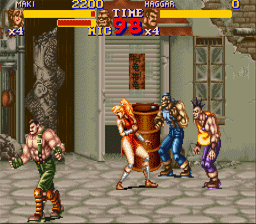 65. Final Fight 2 Final Fight 2 is a 1993 beat 'em up for the Super NES and the second game in Capcom's Final Fight series. Unlike the original Final Fight, Final Fight 2 was not an arcade game, but was made specifically for the home market. The game features the return of Mike Haggar from the original game and introduces Maki and Carlos. Set sometime after the events of the original Final Fight, the Mad Gear gang has been revived under the leadership of a man named Retu in Japan. In retaliation for their early defeat, they had kidnapped Guy's fiancee, Rena and her father (Guy's master), Genryusai. Two days after the abduction, Haggar receives a phone call from Maki (Rena's sister) informing him of the situation and tells him to meet up with her in Hong Kong. With Cody on vacation with Jessica and Guy away on a training mission, Haggar enlists the help of Carlos Miyamoto, a swordsman and boarder who is staying with Haggar. The two meet with Maki and decide to travel through various parts of Eurasia in search of Mad Gear's new hideout. The game can be considered as an attempt by Capcom compensate for the earlier SNES version of Final Fight (as well as Final Fight Guy). The gameplay is not very different from the original game in terms of changes. However, the 2 player cooperative game mode that was missing from the first SNES is restored in the sequel and the game offers three playable characters (instead of two). Though neither Guy nor Cody is a playable character in this game, Maki and Carlos are essentially their replacements (this is further emphasized by the fact that Maki uses the same fighting style as Guy). The only returning enemy (besides the Andore family) is Rolento, a boss character from the original arcade game who was missing in the SNES version. The new enemies are also analogues to the ones from the first game, with virtually all of the new Mad Gear members (Elias, Eleck, Mary) having similar fighting styles to their counterparts from the first game (El Gado, G. Oriber, Poison). Instead of an American city like Metro City, the game takes place primarily in various European and Asian cities and landmarks, thereby giving the game its own distinct look. |
|
|
|
Post by Seth Drakin of Monster Crap on Oct 23, 2007 15:16:02 GMT -5
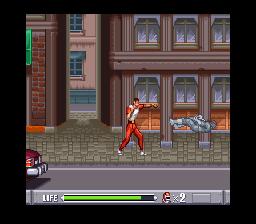 64. Mighty Morphin Power Rangers Mighty Morphin Power Rangers is a videogame for Super Nintendo, Sega Mega Drive, Game Gear, Sega CD, and Game Boy. Based on Haim Saban's children's TV show Mighty Morphin Power Rangers. The SNES version is a 2D beat 'em up. You start each level unmorphed, you have to defeat waves of Putties intill you reach the halfway point, then you morph, you then fight though the rest of the level until you reach the boss. You can also use a special attack while morphed. The final two levels are Megazord battles. You can replay the Dino Megazord battles with 2 players by entering certain passwords. Bosses are: * Stage-1 Bones * Stage-2 Gnarly Gnome * Stage-3 Eye Guy * Stage-4 Genie * Stage-5 Dark Warrior Megazord battles are: * Stage-6 Mutitus * Stage-7 Cyclopsis |
|
|
|
Post by Seth Drakin of Monster Crap on Oct 23, 2007 15:18:24 GMT -5
 63. Mario Is Missing Mario Is Missing! is a geography edutainment video game for the PC, Super NES, and NES. It was developed by The Software Toolworks and was released in 1992 for the PC. In 1993, two different versions were made for the SNES and NES, the latter being developed by Radical Entertainment. All three versions were published by the Mindscape Group. The game is notable for being the first game to feature only Luigi as a playable character, prior to Luigi's Mansion. Since this game was not actually developed by Nintendo or Shigeru Miyamoto (they sublicensed the characters), it bears little resemblance to earlier Mario titles. The SNES version runs on a very heavily modified Super Mario World engine. Bowser has set up a castle in Antarctica, and plans to use many hair dryers from the Hafta Havit mail-order company to melt the Antarctic ice and flood the Earth. He sends his Koopas to different cities across the Earth to steal artifacts in order to fund his operation. Mario, Luigi and Yoshi journey to Bowser's castle in an attempt to stop him. Luigi is hesitant to go in, so Mario goes by himself and is captured by Bowser. Luigi must now rescue Mario from Bowser and save the day. Luigi progresses through the game by completing levels in Bowser's castle; each floor is guarded by one Koopaling and contains a number of pipes which transport Luigi to a city containing Koopas. Once a floor is completed, Luigi must defeat the Koopaling guarding that floor to proceed to the next. The main gameplay consists of moving around a city in side-scrolling manner while jumping on Koopas to collect stolen artifacts (pieces of famous landmarks). Luigi then must take these artifacts to their respective locations and correctly answer three questions about the landmark. Once an artifact is returned, the landmark is reopened. During the quest to return all three artifacts to their proper landmarks, Luigi must determine his location in order to receive the assistance of Yoshi by using a device called the Globulator. If Luigi takes Yoshi to the correct location, he can ride him for double the walking and running speed. Once the exit pipe is found, Luigi is returned to the castle as long as he has Yoshi with him; otherwise he will be unable to return to the castle. He can then proceed to another town to do it all over again. In each city, Luigi is able to question the locals to gain clues as to his current location, the general direction of remaining Koopas, and information about the affected landmarks. He is given a map detailing where the information booths, people and Koopas are in the city where Luigi is. |
|
|
|
Post by Seth Drakin of Monster Crap on Oct 23, 2007 15:21:54 GMT -5
027.png) 62. Super Bomberman 3 Super Bomberman 3 is a game released for the Super Famicom/Super NES in 1995. It is the third game in the Bomberman series for the SNES. This was also the first 5-player game that was released on the SNES. This game scales back a lot of gameplay additions made in Super Bomberman 2 and returns to the classic formula. As for multiplayer, the game improves a lot over Super Bomberman 2 by adding more characters, each representing a country of Earth. There are also new cutscenes for the Story mode, which centers around the resurrection of the Five Bad Bombers who were previously defeated in Super Bomberman 2, as Shirobon and Kurobon adventure across various element themed planets in which the Five are causing havoc, under the rule of their creator, Bagular. Super Bomberman 3 is also the first game in the Super Bomberman series to feature Louies. The overall animation graphics changed with the 3rd installment; unlike Super Bomberman 1 and 2, the 3rd sequel's graphics were simplified drastically, which look similar to the graphics of the old PC-Engine/TurboGrafix 16 Bomberman games, and most of the music in the game are remixed versions of previous older Bomberman soundtracks. In both the story and multiplayer modes, eggs can be found that hatch into the kangaroo-like creatures upon contact, with different special abilities and different colours. * The blue Louie has the ability to kick the bomb in an arc a distance away, like the Power Mitt. * The green one can run from one end of the arena to the other until blocked. * The brown one can lay the maximum number of bombs in a line in the direction faced. * The pink one can jump over the maximum of one block of wall or even a bomb blast. * The yellow one has the power to kick one combustible wall a short distance away. |
|
|
|
Post by Seth Drakin of Monster Crap on Oct 23, 2007 15:24:22 GMT -5
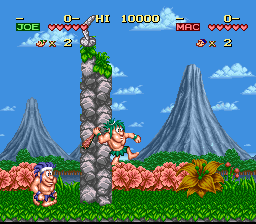 61. Joe & Mac Joe & Mac (Tatakae Genshijin: Joe & Mac in Japan, also known as Caveman Ninja) is an arcade game by Data East that was later adapted for the Super NES, Mega Drive/Genesis, Nintendo Entertainment System, Game Boy, Amiga and PC. It stars the green-haired Joe and the blue-haired Mac, cavemen who battle though numerous prehistoric levels using crude, stone weapons such as boomerangs, bones and clubs. The objective of the game is simply rescuing a group of girls who were kidnapped by a rival gang of cavemen. The gameplay is similar to Metal Slug and has a Gauntlet style health system, where the player loses health over a period of time apart from in boss battles. The original arcade version had the distinction of allowing the player to select between different routes (not unlike Taito's Darius) at the end of a boss battle. Also, after defeating the final boss, the players can choose between three exits, which each one enables a slightly different ending. The Mega Drive/Genesis port is the most accurate to the arcade version, with only slightly reduced graphical and aural detail. The Super NES port features an overworld map in order to choose the levels (unlike other versions all of them have to be played), which were longer, plus some bonus stages (either in the levels or out in the world map). Some of the weapons are different with the addition of fire and wheel attacks. The final boss is also different and there is only one ending. The NES and Game Boy versions are much downgraded versions of the original arcade version, and without the possibility of choosing levels. The game could be played in either single player or two player mode. In the two player mode, both characters could hurt each other. The game was notable for its cartoony graphics, humor, and sound effects. The game would get a SNES sequel called Joe & Mac 2: Lost in the Tropics and an arcade sequel called Joe & Mac Returns |
|
|
|
Post by Seth Drakin of Monster Crap on Oct 23, 2007 15:33:06 GMT -5
Now for the countdown update
150. King Of The Monsters
149. Captain America And The Avengers
148. Bugs Bunny Rabbit Rampage
147. Cannon Fodder
146. Wayne's World
145. Madden NFL 95
144. Metal Warriors
143. Super Godzilla
142. Spider-man & Venom: Separation Anxiety
141. Clay Fighter
140. Super Bomberman 2
139. X-Men: Mutant Apocalypse
138. Kirby's Avalanche
137. Striker
136. Fatal Fury Special
135. King Of Dragons
134. Rap Jam: Volume One
133. Disney's Magical Quest
132. Doom
131. Samurai Shodown
130. International Superstar Soccer
129. Breath Of Fire
128. Sim City 2000
127. U.N. Squadron
126. Desert Strike: Return To The Gulf
125. Daffy Duck: The Marvin Missions
124. Super Battleship
123. S.O.S.
122. Gradius III
121. Tetris 2
120. Lufia II: Rise Of The Sinistrels
119. The Lion King
118. Spider-man & Venom: Maximum Carnage
117. Demon's Crest
116. Pinball Fantasies
115. Inindo: Way Of The Ninja
114. World Cup Striker
113. Run Saber
112. NCAA Football
111. Krusty's Fun House
110. The Simpsons: Virtual Bart
109. Cool Spot
108. Tecmo Secret Of The Stars
107. Super Caesar's Palace
106. Pilotwings
105. Road Runner's Death Valley Rally
104. Romance Of The Three Kingdoms IV: Wall Of Fire
103. Teenage Mutant Ninja Turtles: Tournament Fighters
102. Riddick Bowe Boxing
101. Saturday Night Slam Masters
100. Super Return Of The Jedi
99. Shadowrun
98. Kirby's Dream Course
97. Rock N' Roll Racing
96. NHL 94
95. Madden NFL 97
94. Paladin's Quest
93. Axelay
92. Advanced Dungeons & Dragons: Eye Of The Beholder
91. Wrestlemania: The Arcade Game
90. FIFA International Soccer
89. Super Tennis
88. King Arthur's World
87. Terranigma
86. NBA Live 98
85. WWF Super Wrestlemania
84. Skyblazer
83. Madden NFL 98
82. Street Fighter Alpha 2
81. Soul Blazer
80. Secret Of Evermore
79. Ken Griffey Jr.'s Winning Run
78. Final Fight 3
77. Illusion Of Gaia
76. Parodius: Non-Sense Fantasy
75. Front Mission
74. Harvest Moon
73. Earthworm Jim 2
72. Flashback: The Quest For Identity
71. Super R-Type
70. Mortal Kombat III
69. Super Smash TV
68. Breath Of Fire II
67. The Legend Of The Mystical Ninja
66. Super Empire Strikes Back
65. Final Fight 2
64. Mighty Morphin Power Rangers
63. Mario Is Missing
62. Super Bomberman 3
61. Joe & Mac
Here Are The Hints To The Next Five Games On Our List
* A New Hope
* I Have A Super Bomb
* Lightning Strikes For A Third Time
* Ride Into The Sunset
* Your Fortress Is Doomed
|
|
|
|
Post by forgottensinpwf on Oct 23, 2007 15:34:17 GMT -5
Super Star wars, and Sunset Riders are on the horizon.
|
|
|
|
Post by scifi1980 on Oct 23, 2007 15:49:45 GMT -5
I loved the Joe and Mac arcade game. I had fallen out with Street Fighter 2 and this is the game I started playing religiously next. I spent $20 in quarters to finally beat it. If I remember correctly the stone wheel weapon was the most powerful.
Unfortunatley the SNES version was not as good.
|
|
|
|
Post by Seth Drakin of Monster Crap on Oct 23, 2007 17:42:05 GMT -5
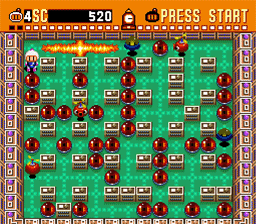 60. Super Bomberman Super Bomberman is the first video game in the Bomberman series to appear on the Super Nintendo Entertainment System. It is also the first 4-player game that was released on the SNES. The basic gameplay involved in Super Bomberman is relatively simple. The game takes place on a single non-scrolling screen. The screen shows the top down view of a 7x6 grid. The grid restricts the movement of characters so they can only move horizontally or vertically around the screen. Pressing the 'A' button will make your Bomberman drop a bomb at his feet. This bomb will pulse for a few seconds (allowing you time to run away) and then explode, shooting flames horizontally and vertically. The game revolves around the idea of using these bomb blasts to destroy walls and enemies. If a bomb explodes and the flame hits another bomb it will cause this second bomb to detonate early. This can cause large chain reactions. If the flame from any bomb hits any character it will injure or kill them (unless they are currently invincible). Most levels start with the grid being partially filled with destructible soft walls. If a bomb blast hits one of these soft walls then it disintegrates allowing characters to pass through the now empty space. Levels can quickly be cleared of soft walls, but it is usually useful to leave some making it easier to trap enemies. Once a bomb is laid it is usually impossible to walk past until it has detonated. This leads to the tactic of trapping enemies with bombs and forcing them into bomb blasts. Special items can be picked up by walking over icons on the screen. These items are normally revealed when destroying walls or killing enemies. There are many different items which give you different abilities, these change a players tactics and the way the game is played. Normal Game consists of 6 themed worlds each with its own set of enemies. Each world has 8 stages with the last stage being a boss fight. You make progress through the game by clearing all the enemies from the stage and then exiting via a door that is hidden under one of the destructible walls. World 5 differs from the rest because you fight robot Bombermen in an arena. The arena has no destructible walls or exit doors. The end of each stage is not defined like the other worlds. Instead, once you have cleared the arena of one set of robot Bombermen, then the next set walk into the arena, thus making this world one long continuous battle. The normal game can be played by 1 or 2 players. In 2 player mode the aim is to work cooperatively to defeat the enemies, although it is still possible to blow up your team mate with your own bombs. The game utilized a password system to save your progress. Each stage you were given a 4 digit password that would allow you to return to that stage by entering it on the options screen. There was also a special password ("5656") which would make all your Bombermen really tiny (although this had no effect on the gameplay) Far to the north of Bomberman's hometown, Peace Town, lies the modern metropolis Diamond City. There, the evil Carat Diamond and his cohort, scientist Dr. Mook, are holding a Robot Tournament with robots specially designed for their combat and offensive capabilities. Hoping to steal Bomberman's advanced combat capabilities, Diamond has created a fake Bomberman to go to Peace Town and kidnap the real Bomberman. Aware of Diamond's plot, Black Bomberman heads out alone to face the fake Bomberman. But Black Bomberman is defeated and his castle is taken. Somehow Black Bomberman escapes and seeks refuge with White Bomberman, and warns him of Diamond's evil plan. Soon, wave upon wave of enemy robots begin their advance toward Peace Town. Now our two heroes must join forces to overthrow the evil Diamond II. Battle Mode is played by 2 to 4 players, controlled by either humans or the computer. Because the standard SNES control deck only has 2 controller ports, if you want to play with more than 2 human players you have to use a multitap device. The battle takes place on 1 of 12 themed stages. The aim is to blow up the other players whilst staying alive yourself. All bomb blasts are instantly fatal in Battle Mode. If you are the last player remaining you win the round and receive a gold trophy. The overall winner is the first person to win a set number of gold trophies (i.e. the first person to win a certain number of rounds). The number of trophies needed is configurable when starting the game and ranges from 1 to 5. Each round has a time limit of 2 minutes. If nobody has won after 2 minutes then the round is declared a draw and no trophies are given. It is also possible for a draw to occur if all remaining players are blown up at the same time. After 1 minute the game displays a message to "Hurry Up!" and then starts dropping indestructible walls around the edge of the play field (starting bottom left and travelling clockwise), effectively reducing the area you can move around in. If you get hit by one of these dropping walls you are instantly killed. Battle Mode can be extremely fast paced and hectic, this is reflected in the fast paced music score that accompanies it. Special items appear for ammo supply as players destroy walls, enemies, or opponent Bombermen. During a Normal Game, the effects of all items except fire power, number of bombs, and speed will be lost when the player loses a life. During a Battle Game, the effects of all the items last for one battle only. Super Bomberman was originally bundled with a multitap device to allow more than 2 players to play simultaneously. The Super Multitap was long and grey with 4 controller ports in a row on one side. It plugged into either of the controller ports on the SNES deck. This meant a total of 5 controllers could be plugged in with the fifth controller plugged into 2nd port on the SNES. Although Super Bomberman, as well as Super Bomberman 2, only allowed the use of the first 4 controllers to play the game, other Bomberman games: 3, 4 and 5 allowed to use 3-5 controllers and the 5th controller would allow a sound test to be accessed by pressing the R shoulder button on the option screen. Hudson later released a second multitap (the Super Multitap 2) on its own for people that had purchased Super Bomberman unbundled, or one of the other multitap enabled games. This second version was designed in the shape of a Bomberman's head and had the 2 controller ports on the front and 1 on each side. It was also designed to be used with future games. Eventually there were 54 (mainly sports) SNES games that utilised the multitap. |
|
|
|
Post by Seth Drakin of Monster Crap on Oct 23, 2007 17:45:36 GMT -5
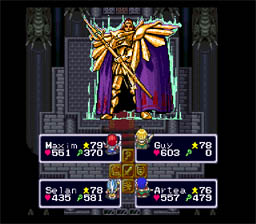 59. Lufia & The Fortress Of Doom Lufia & the Fortress of Doom (ƒGƒXƒgƒ|ƒŠƒX“`‹L, Estpolis Denki?, lit. "Estpolis Biography") is an RPG with puzzle elements developed by Neverland and published by Taito in 1993, for the Super Nintendo video game console. It is the first game in the Lufia series of video games. The story of Lufia & the Fortress of Doom begins, in accordance with an ancient prophecy of the Lufia world, with a massive floating island with a large castle located on it emerging into the sky one dark day. Dubbed the "Fortress of Doom", this castle served as the base of operations for a group of all-powerful beings known as the Sinistrals, who planned to use their strength to bring the world to its knees. In response, the people sent four of their bravest warriors: Maxim, Selan (Serena in Estopolis Denki), Artea (Arty in Estopolis Denki), and Guy, to infiltrate the dark fortress and destroy the Sinistrals before they could do any harm. The game begins with the player controlling these characters as they prepare to engage the Sinistrals, and eventually defeat them. However, after the battle, the fortress begins to collapse, with Maxim and Selan becoming trapped on the other side of a deep chasm that formed when the Sinistral throne room split apart. Unable to teleport them to safety, Artea and Guy left the falling island alone, and their trapped allies apparently perished when it crashed into the earth below. Peace reigns for ninety years after the heroes' encounter with the Sinistrals, and the actual game begins nine years after that. The story is told from the perspective of a red-haired boy the player is in charge of naming, and along the way he gets caught up in a struggle to save the world once again from the newly emerged Sinistral army. Lufia & the Fortress of Doom plays much like a traditional RPG and features 2D character sprites and environments. The player advances the story by travelling through several harsh dungeons, encountering monsters along the way. These battles occur randomly (every few steps or so) or in scripted situations, and winning them yields experience points that go towards leveling up the characters, giving them access to new abilities and making them stronger in the process. The battles themselves take place from a first-person perspective, and require the player to use each character's strengths, such as physical attacks or magic use, as in many other mainstream RPGs. An interesting quirk in the battle system, reminiscent of older RPGs like the original "Final Fantasy"(Square Enix 1987); of the game makes it such that if you order two characters to attack a particular enemy, and the first character defeats the enemy, the second character's attack will still target the defeated enemy and thus miss. Thus foresight is required to make sure that no characters' battle moves are wasted, unlike other RPGs, where other enemies will be targeted if the intended enemy has already been defeated. Puzzles are often used throughout the game and must be solved in order to advance. They range from moving blocks around a room into certain patterns to solving riddles posed by the games NPCs. Many dungeons have doors which cannot be opened unless a puzzle within the room is solved. If a player ever finds himself unable to complete the puzzle, or has no way to continue it due to an error they have made, exiting the room and re-entering it will reset all the components back to their original position. New equipment and restorative items are purchased from vendors in various towns, or found in chests scattered throughout the world. The player's progress is saved in one of three available slots on the cartridge's built-in battery back-up system by speaking to a priest at a church found in most towns. |
|
|
|
Post by Seth Drakin of Monster Crap on Oct 23, 2007 17:47:55 GMT -5
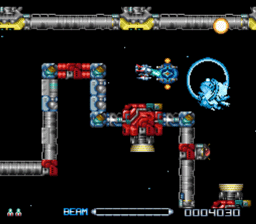 58. R-Type III: The Third Lightning R-Type III: The Third Lightning is a horizontally-scrolling shooter video game released by Irem in 1993. -Type III was originally released only on the Super NES, but later ported to the Game Boy Advance. The SNES version has been recently released for download at Virtual Console. It was the first game in the series to introduce new Forces. As well as the original Force (which was now named the Round Force, later named as the Standard Force in R-Type Final), the player could choose from two other Forces: the Shadow Force and the Cyclone Force. These both had new, different weapon sets and special enhancements. It also refined the weapons and charging system. It reverted to the original Red-Blue-Yellow weapon system, and the Diffusion Wave Cannon from R-Type II was replaced with a more standard wave cannon. Charging this cannon to full beam strength results in a massive, powerful beam that passes through all enemies and obstacles. A new weapon called the Hyper Wave Cannon was also added to the ship, which the player could use instead of the normal wave cannon if they desired. By switching to Hyper mode and supercharging the wave cannon, the ship temporarily gains the ability to use the Hyper Wave Cannon, which is unique among wave cannons in having a rapid fire capability. The shots fired create damaging explosions, and if the player has collected one or two Bits, they spin around the ship burning with energy. However, this Hyper mode causes the ship to overheat after a short while, and it must subsequently spend seconds cooling down, during which time the wave cannon is inoperative. The fighter in R-Type III is identified in R-Type Final as the R-9Ø Ragnarok; it was originally referred to as 'R-90'. In fact, the original R-90 has been split into three in Final: the R-9S Strike Bomber has the R-90's basic Standard force unit and first wave cannon, identified as 'Mega Wave Cannon.' Final's version of the R-90 has the Shadow Force and Hyper Wave Cannon, but is unable to choose its Force or switch between Wave Cannons. Finally, the R-9Ø2 Ragnarok II has the R-90's final Force, the Cyclone Force and the Giga Wave Cannon, which can be charged through 7 loops. It can be assumed that this is because the original R-90 would simply be too powerful for the game to be any kind of challenge. |
|
|
|
Post by Seth Drakin of Monster Crap on Oct 23, 2007 17:52:17 GMT -5
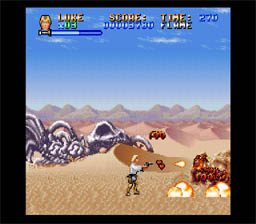 57. Super Star Wars Super Star Wars is the first of a series of three Super Nintendo games based on the original three films of the Star Wars series. The term Super Star Wars can refer to the first game or to all three games collectively. All three are essentially platform games, although they all have stages which feature other challenges, such as driving a landspeeder or piloting an X-wing. All three games also feature multiple playable characters with different abilities. Super Star Wars is a remake of Star Wars, a lesser-known game released in 1991 for the Nintendo Entertainment System and Sega Master System. Originally, the game design was planned to give the characters a dark black outline around their bodies, similar to Ultima VIII: Pagan. However, this idea was abandoned, as it was thought to make the characters too cartoonish-looking. The final boss in the game is Darth Vader in his TIE Advanced x1. Super Star Wars generally follows the plot of Star Wars Episode IV: A New Hope, although some allowances must be made to adapt the story to suit a platform action game. For example, instead of simply buying C-3PO and R2-D2 from the Jawas, Luke Skywalker must fight his way to the top of a Jawa sandcrawler while leaping from a series of moving conveyor belts. Later stages allow the player to control smuggler and pilot Han Solo or Chewbacca the Wookiee. |
|
|
|
Post by Seth Drakin of Monster Crap on Oct 23, 2007 18:00:18 GMT -5
 56. Sunset Riders Sunset Riders is a run and gun arcade game created by Konami in 1991. It is set in the wild west. The game was later ported to the Mega Drive/Genesis in 1992, and to the SNES video game console in 1993. The game, which is set in a fanciful version of the American Old West, revolves around four bounty hunters who are out to claim rewards given for eliminating the most wanted outlaws in the West. There is no true "storyline" aside from collecting progressively larger rewards. At the beginning of each level the player is shown a wanted poster, showing the criminal, the reward for stopping them, and the cliché line "Wanted dead or alive". Sunset Riders is similar to other run and guns, such as Konami's Contra, but with less emphasis on jumping and a greater focus on shooting. The game includes a total of four playable characters to choose from: Steve, Billy, Bob, and Cormano. The characters are slightly differentiated: Steve and Billy use revolvers, Bob carries a rifle, and Cormano is armed with a shotgun. The rifle and shotgun shoot somewhat slower than their revolver counterparts, but have a wider spread, making them ideal for taking out enemies without too much precise aiming. On the full-size arcade cabinet up to four players can play simultaneously, each as a different character. The player can fire in 8 directions, slide to avoid bullets, and perform surprisingly acrobatic jumps onto and from rooftops, offering additional vantage points from which to fight. Many enemies can do the same. Unlike Contra (but similar to Metal Slug), colliding with enemies does not kill the player; only bullets, pits and other obstacles are fatal. Throughout the levels there are doors that can be opened, as in the games Rolling Thunder and Shinobi. Enemies may come out of some doors, while others yield power-ups. When the player emerges from one of doors containing a power-up a short animation plays, showing the protagonist being kissed on the cheek by a female bar fly or taking a swig from a bottle of liquor. Many enemies utilize stick-dynamite as a weapon; if quick enough, the dynamite can be picked up and thrown by the players. Once initially thrown the dynamite will start to blink at an accelerated pace, which represents the remaining length of the fuse. When it explodes it will eliminate both players and enemies, even if the enemies initially threw the dynamite. This particular rendition of the wild west also features plenty of opportunely placed boulders, barrels, and explosives that happen to reside above the heads of enemies and can be used to the player's advantage. At the end of each level the cash bounty is distributed amongst the players in proportion to the amount of damage they dealt to the boss. There are three types of hidden items in Sunset Riders. All of the gun power-ups are lost when the player gets killed. * Rapid fire: Represented by a gold sheriff's badge marked with a large revolver, this item allows players to hold the button to fire (instead of hitting it repeatedly) and accelerates the bullets slightly. * Dual fire: Represented by a silver sheriff's badge emblazoned with two revolvers, this icon gives the player a second weapon. Steve and Billy fire their dual revolvers at different angles, while Bob and Cormano aim their paired rifles/shotguns in the same direction for a wider shot spread. * Monetary award: A pile of gold coins (worth $2000) or a roast turkey (worth $500). In addition, once a character's guns are fully powered up, any rapid/dual fire items he picks up are worth $1000 each. There are a total of eight levels in the game. Each boss says a short phrase at the beginning and end of each battle. A few of the phrases contain minor translation errors. Most of the game consists of side-scrolling on foot, however Stage 2 and Stage 7 are done partially on horseback. In addition, there are two bonus rounds, one after level 2 and the other after level 5. * Stage 1 – This stage is primarily on the outskirts of a small town, crossing over a bridge and then onto a cattle ranch. Simon Greedwell, a wealthy rancher and crime boss who wields a rifle. Battle phrase: "It's time to pay!" Upon death: "ARRRRGH!!" (crashing on the ground near players) "Bury me with my money!" * Stage 2 – This stage is on horseback along a railroad with a moving train, ending at a bandit-infested train station. Hawkeye Hank Hatfield, a sharpshooter with high agility who dives around behind boxes and emerges briefly to fire. Battle phrase: "Draw, pilgrim!" Upon death (hunches over; hat falls off): "Ugh...ya got me." (falls on his face) * Stage 3 – This stage is in a larger town with a series of stores and houses. Dark Horse, a man armed with a revolver who rides a large, black, armor-plated horse. Battle phrase: "You in heap big trouble!" Upon death (slumps down on horse): "Me in heap big trouble!" (his horse carries him off) * Stage 4 – This stage is completely within a saloon, with enemies perched on the chandelier. The Smith Brothers, two brothers in a bar who hurl either explosives or firebombs at the player. Battle phrase: "We're gonna blow you away!" "Yeah! Yeah!" Upon death: "Holy smoke!" "That was a bang!" (the first brother killed slumps over the railing of his platform and stays onscreen, the second brother falls down and explodes) * Stage 5 – This stage is on top of a moving train that has been taken over by enemies. El Greco, a Mexican man who uses a bullet-proof shield and a whip and wears a bright red sombrero. Battle phrase: "Die, Gringo!" Upon death: "Adios, amigo!" (Tosses sombrero away, falls under the train and gets run over. Note: If Cormano is in the game, he will catch the sombrero and wear it throughout the remaining stages.) * Stage 6 – This stage is on a mountain range within Indian territory. Chief Scalpem (changed to Wigwam for the Super Nintendo, most likely due to fear of racial insensitivity) is a Native American shaman who flings throwing knives at the player(s) and can block bullets. Battle phrase: "Me ready for Pow-Wow!" Upon death: "Me Pow-Wowed OUT!" (A young woman then comes on the screen and pleads to the players not to shoot her brother; in fact, she says he was "only following orders". The heroes agree to spare him. They say "OK Ma'am, we won't shoot him") * Stage 7 – This stage is on horseback through a forest, ending at a fort guarding Richard Rose's estate. Paco Loco, a rather obese man who sits atop the fort gate and fires a machine gun. Battle phrase: "Ay, chihuahua!" (pounds his chest) Upon death: (falls over the gate and onto the ground) "Hasta la BYE BYE!" (fires above the heroes' heads and falls backward) * Stage 8 – This stage is inside Richard Rose's compound and ends at the front door of his mansion. Sir Richard Rose, a British man who fires at the player from a balcony behind a statue of two lions. He initially prefers to hide behind the safety of the statues while his private army does most of the dirty work, but the battle soon switches gears and he dashes around the screen with agility that rivals the player characters. He also has to be defeated twice (since he wears bullet proof armor in the first half of the battle, and the Genesis version has the final boss battle song transposed up one note to signify the second half). The statues can be shot away to give a better field of fire. Battle phrase: "Cheerio, ol' chap!" Upon death (Arcade version has a picture of a rose falling apart instead of the final boss dying; SNES version depicts him falling on his knees): "I say...bit o' bad luck..." (collapses) * Bonus Stages – The player has a limited time to shoot up to 50 enemies that pop up in various locations on the screen. This stage is done in a first-person fashion where the joystick is used to aim the targeting cursor. The enemies do not fire back, so the player cannot lose anything from playing these stages. They appear after levels 2 and 5. While the SNES version is fairly faithful, the Mega Drive/Genesis version reduces the number of characters to two, and similarly the number of levels is cut in half, in addition to the common occurrence of lower sound and graphic quality. Also, the stage designs are completely different. One of the biggest changes to the Super NES version was the replacement of the Native American enemies in the sixth stage, with the regular cowboy enemies in their place instead. This changes some of the gameplay on that stage, since the regular Native enemies fired flaming arrows and dropped rocks on you, attempting to block your progress. Also, Chief Scalpem (or Wigwam, as he is called in the Super NES version) says, "Get ready for a Pow-Wow", and "I'm Pow-Wowed out!", with correct grammar. Not surprisingly, this only affects the caption. As the voice clips couldn't be redone, they were simply shortened to, "Ready for Pow-Wow", and "Pow-Wowed out!". Other changes to the U.S. Super NES version include removal of female enemies (possibly to avoid backlash of violence against women), and giving all the female barflies in the game longer dresses instead of their normal corsets and underwear. Also none of the characters drink anything or get kissed by female barflies when they come out of doors, instead simply posing when they get a powerup from a door. |
|
|
|
Post by Seth Drakin of Monster Crap on Oct 23, 2007 18:07:37 GMT -5
Now for the countdown update
150. King Of The Monsters
149. Captain America And The Avengers
148. Bugs Bunny Rabbit Rampage
147. Cannon Fodder
146. Wayne's World
145. Madden NFL 95
144. Metal Warriors
143. Super Godzilla
142. Spider-man & Venom: Separation Anxiety
141. Clay Fighter
140. Super Bomberman 2
139. X-Men: Mutant Apocalypse
138. Kirby's Avalanche
137. Striker
136. Fatal Fury Special
135. King Of Dragons
134. Rap Jam: Volume One
133. Disney's Magical Quest
132. Doom
131. Samurai Shodown
130. International Superstar Soccer
129. Breath Of Fire
128. Sim City 2000
127. U.N. Squadron
126. Desert Strike: Return To The Gulf
125. Daffy Duck: The Marvin Missions
124. Super Battleship
123. S.O.S.
122. Gradius III
121. Tetris 2
120. Lufia II: Rise Of The Sinistrels
119. The Lion King
118. Spider-man & Venom: Maximum Carnage
117. Demon's Crest
116. Pinball Fantasies
115. Inindo: Way Of The Ninja
114. World Cup Striker
113. Run Saber
112. NCAA Football
111. Krusty's Fun House
110. The Simpsons: Virtual Bart
109. Cool Spot
108. Tecmo Secret Of The Stars
107. Super Caesar's Palace
106. Pilotwings
105. Road Runner's Death Valley Rally
104. Romance Of The Three Kingdoms IV: Wall Of Fire
103. Teenage Mutant Ninja Turtles: Tournament Fighters
102. Riddick Bowe Boxing
101. Saturday Night Slam Masters
100. Super Return Of The Jedi
99. Shadowrun
98. Kirby's Dream Course
97. Rock N' Roll Racing
96. NHL 94
95. Madden NFL 97
94. Paladin's Quest
93. Axelay
92. Advanced Dungeons & Dragons: Eye Of The Beholder
91. Wrestlemania: The Arcade Game
90. FIFA International Soccer
89. Super Tennis
88. King Arthur's World
87. Terranigma
86. NBA Live 98
85. WWF Super Wrestlemania
84. Skyblazer
83. Madden NFL 98
82. Street Fighter Alpha 2
81. Soul Blazer
80. Secret Of Evermore
79. Ken Griffey Jr.'s Winning Run
78. Final Fight 3
77. Illusion Of Gaia
76. Parodius: Non-Sense Fantasy
75. Front Mission
74. Harvest Moon
73. Earthworm Jim 2
72. Flashback: The Quest For Identity
71. Super R-Type
70. Mortal Kombat III
69. Super Smash TV
68. Breath Of Fire II
67. The Legend Of The Mystical Ninja
66. Super Empire Strikes Back
65. Final Fight 2
64. Mighty Morphin Power Rangers
63. Mario Is Missing
62. Super Bomberman 3
61. Joe & Mac
60. Super Bomberman
59. Lufia & The Fortress Of Doom
58. R-Type III: The Third Lightning
57. Super Star Wars
56. Sunset Riders
Here Are The Hints To The Next Five Games On Our List
* Defeat Dr. Doppler
* Dont Make Me Smash You With My Tennis Racket
* Pocket Rocket
* Robots Are Treking
* Segres, Agile, & Violen
|
|
|
|
Post by scifi1980 on Oct 23, 2007 20:26:00 GMT -5
BURY ME WITH MY MONEY ;D
Another one of my favorite arcade games. I usually used the cowboy who wore the blue outfit.
|
|


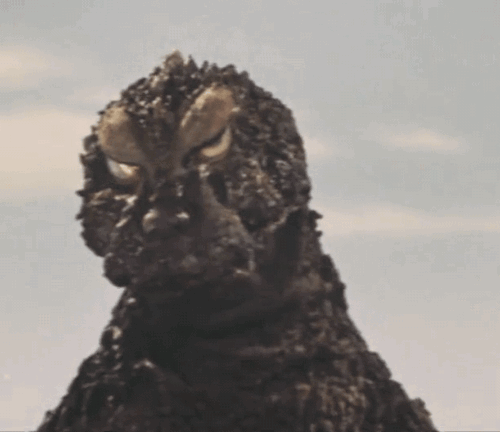
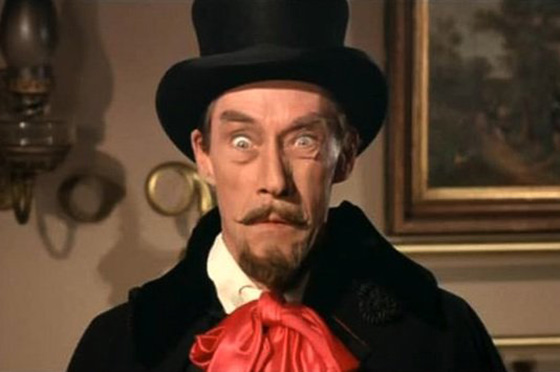






027.png)






